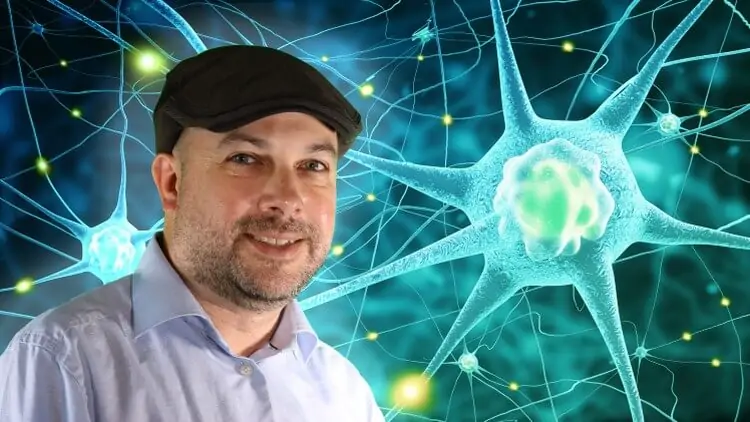Comprehensive free course on machine learning, data science, and deep learning with our hands-on also you can free download. ✍ Learn TensorFlow, AI, neural networks & practical skills to succeed in a fast-paced industry. Start your journey now!
⚡ Get started with machine learning, data science, and Python for free! In this course, you will learn how to:
- Build artificial neural networks with Tensorflow and Keras.
- Implement machine learning at massive scale with Apache Spark’s MLLib.
- Classify images, data, and sentiments using deep learning.
- Make predictions using linear regression, polynomial regression, and multivariate regression.
- Visualize data with MatPlotLib and Seaborn.
- Utilize reinforcement learning techniques and build a Pac-Man bot.
- Classify data using K-Means clustering, support vector machines (SVM), KNN, decision trees, naive Bayes, and PCA.
- Use train/test and K-Fold cross validation to choose and tune your models.
- Design and evaluate A/B tests using T-tests and P-values.
- And much more! Enroll now in our free machine learning and data science course with Python.
Description
Get started with machine learning and data science for free! Our comprehensive course covers the fundamentals you need to succeed in this hot career path, including over 100 lectures spanning 15 hours of video. With hands-on Python code examples and real-world applications, you’ll gain a practical understanding and application of key concepts used by real data scientists and machine learning practitioners at top tech companies like Google and Amazon. Whether you’re a beginner or have some programming experience, our course will prepare you for a move into this exciting field, with topics ranging from A-Z of machine learning, AI, and data mining techniques. Enroll now in our free machine learning and data science course with Python.
Ready to master the world of machine learning and deep learning with Python? Our comprehensive course covers all the key topics you need to know, including:
- Deep Learning and Neural Networks (MLP’s, CNN’s, RNN’s) with TensorFlow and Keras
- Creating synthetic images with variational Auto-Encoders (VAE’s) and Generative Adversarial Networks (GAN’s)
- Data visualization in Python with MatPlotLib and Seaborn
- Transfer Learning
- Sentiment analysis
- Image recognition and classification
- Regression analysis
- K-Means Clustering
- Principal Component Analysis
- Train, test, and cross-validation
- Bayesian Methods
- Decision Trees and Random Forests
- Multiple Regression
- Multi-Level Models
- Support Vector Machines
- Reinforcement Learning
- Collaborative Filtering
- K-Nearest Neighbor
- Bias/Variance Tradeoff
- Ensemble Learning
- Term Frequency/Inverse Document Frequency
- Experimental Design and A/B Tests
- Feature Engineering
- Hyperparameter Tuning
With hands-on training and practical examples, you’ll gain the skills you need to succeed in today’s fast-paced industry. Enroll now in our free machine learning and data science course with Python and start your journey towards becoming an expert!
Take your machine learning skills to the next level with our comprehensive course – and much more! We also cover machine learning with Apache Spark, allowing you to scale up your techniques to analyze “big data” on a computing cluster. If you’re new to Python, don’t worry, we start with a crash course. Whether you’re a programmer looking to switch careers or a data analyst transitioning to the tech industry, our course covers the basic techniques used by real-world industry data scientists. Enroll now and learn the topics you need to succeed in today’s fast-paced industry!
Course Content of machine learning and data science free course:
Getting Started
- Introduction
- Udemy 101: Getting the Most From This Course
- Important note
- Installation: Getting Started
- WINDOWS: Installing and using Anaconda & Course Materials
- MAC: Installing and using Anaconda & Course Materials
- LINUX: Installing and Using Anaconda & Course Materials
- Python Basics
- Introducing the Pandas Library
Statistics and Probability Refresher, and Python Practice
- Ordinal
- Mean, Median, Mode
- Using mean, median, and mode in Python
- Variation and Standard Deviation
- Probability Density Function; Probability Mass Function
- Common Data Distributions (Normal, Binomial, Poisson, etc)
- Percentiles and Moments
- A Crash Course in matplotlib
- Advanced Visualization with Seaborn
- Covariance and Correlation
- Conditional Probability
- Exercise Solution: Conditional Probability of Purchase by Age
- Bayes’ Theorem
Predictive Models
- Linear Regression
- Polynomial Regression
- Multiple Regression, and Predicting Car Prices
- Multi-Level Models
Machine Learning with Python
- Supervised vs. Unsupervised Learning, and Train/Test
- Bayesian Methods: Concepts
- Implementing a Spam Classifier with Naive Bayes
- K-Means Clustering
- Clustering people based on income and age
- Measuring Entropy
- WINDOWS: Installing Graphviz
- MAC: Installing Graphviz
- LINUX: Installing Graphviz
- Decision Trees: Concepts
- Decision Trees: Predicting Hiring Decisions
- Ensemble Learning
- XGBoost
- Support Vector Machines (SVM) Overview
- Using SVM to cluster people using scikit-learn
Recommender Systems
- User-Based Collaborative Filtering
- Item-Based Collaborative Filtering
- Finding Movie Similarities using Cosine Similarity
- Improving the Results of Movie Similarities
- Making Movie Recommendations with Item-Based Collaborative Filtering
- Improve the recommender’s results
More Data Mining and Machine Learning Techniques
- K-Nearest-Neighbors: Concepts
- Using KNN to predict a rating for a movie
- Dimensionality Reduction; Principal Component Analysis (PCA)
- PCA Example With the Iris data set
- Data Warehousing Overview: ETL and ELT
- Reinforcement Learning
- Reinforcement Learning & Q-Learning with Gym
- Understanding a Confusion Matrix
- Measuring Classifiers (Precision, Recall, Fl, ROC, AUC)
Dealing with Real-World Data
- Bias/Variance Tradeoff
- K-Fold Cross-Validation to avoid overfitting
- Data Cleaning and Normalization
- Cleaning web log data
- Normalizing numerical data
- Detecting outliers
- Feature Engineering and the Curse of Dimensionality
- Imputation Techniques for Missing Data
- Handling Unbalanced Data: Oversampling, Undersampling, and SMOTE
- Binning, Transforming, Encoding, Scaling, and Shuffling
Apache Spark: Machine Learning on Big Data
- Warning about Java 11 and Spark 3!
- Spark installation notes for MacOS and Linux users
- Installing Spark – Part I
- Installing Spark – Part 2
- Spark Introduction
- Spark and the Resilient Distributed Dataset (RDD)
- Introducing MLlib
- Introduction to Decision Trees in Spark
- K-Means Clustering in Spark
- TF / IDF
- Searching Wikipedia with Spark
- Using the Spark DataFrame API for MLLib
Experimental Design / ML in the Real World
- Deploying Models to Real-Time Systems
- A/B Testing Concepts
- T-Tests and P-Values
- Hands-on With T-Tests
- Determining How Long to Run an Experiment
- A/B Test Gotchas
Deep Learning and Neural Networks
- Deep Learning Pre-Requisites
- The History of Artificial Neural Networks
- Deep Learning in the Tensorflow Playground
- Deep Learning Details
- Introducing Tensorflow
- Using Tensorflow
- Introducing Keras
- Using Keras to Predict Political Affiliations
- Convolutional Neural Networks (CNN’s)
- Using CNN’s for handwriting recognition
- Recurrent Neural Networks (RNN’s)
- Using a RNN for sentiment analysis
- Transfer Learning
- Tuning Neural Networks: Learning Rate and Batch Size Hyperparameters
- Deep Learning Regularization with Dropout and Early Stopping
- The Ethics of Deep Learning
Generative Models
- Variational Auto-Encoders work
- Variational Auto-Encoders (VAE) – Hands-on with Fashion MNIST
- Generative Adversarial Networks (GAN’s) – How they work
- Generative Adversarial Networks (GAN’s) – Playing With some demos
- Generative Adversarial Networks (GAN’s) – Hands-on with Fashion MNIST
- Learning More about Deep Learning
Final Project
- Assignment: Mammogram-Classification
- Final project review
- You made it!
- More to Explore
Who this course is for:
- Software developers or programmers seeking to transition into data science and machine learning careers.
- Technologists curious about deep learning and its applications.
- Data analysts in non-tech industries (like finance) seeking to transition into the tech industry and learn how to analyze data using code.
- Individuals with prior coding or scripting experience who want to gain practical skills in data science and machine learning.
Note: If you have no prior coding or scripting experience, it’s recommended that you take an introductory Python course before taking this machine learning course.
To get started with our machine learning course, you’ll need:
- A desktop computer (Windows, Mac, or Linux) capable of running Anaconda 3 or newer Don’t worry; we’ll walk you through the process of installing the necessary free software.
- Prior coding or scripting experience is recommended to get the most out of this course.
- At least high school level math skills will be required to understand key concepts.
Wait 15 Second For Download This File For Free
Author : https://www.udemy.com/course/data-science-and-machine-learning-with-python-hands-on/
if you find any wrong activities so kindly read our DMCA policy also contact us. Thank you for understand us…










